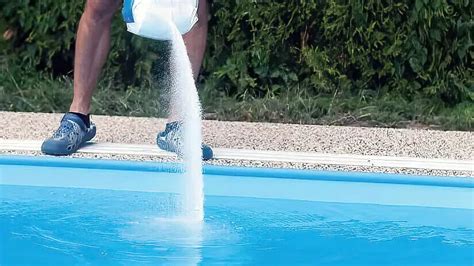The Secret to Perfect Pool Chlorine: Achieving Sparkling Clean Water
Maintaining a sparkling clean and healthy swimming pool requires a delicate balance of chemicals, and chlorine is arguably the most crucial. Getting the chlorine levels just right is key to preventing algae growth, keeping the water clear, and ensuring a safe and enjoyable swimming experience. This article delves into the secrets to achieving perfect pool chlorine levels, addressing common concerns and misconceptions along the way.
What is Chlorine and Why is it Essential?
Chlorine is a powerful disinfectant that effectively kills bacteria, viruses, and algae that can thrive in pool water. It works by oxidizing these contaminants, breaking them down and rendering them harmless. While other sanitizing methods exist, chlorine remains the most widely used and effective option for residential pools due to its affordability and broad effectiveness. Understanding its role is the first step towards mastering pool maintenance.
How Much Chlorine Should My Pool Have?
The ideal chlorine level for your pool isn't a fixed number; it depends on several factors, including pool size, usage, sunlight exposure, and the type of chlorine you're using. Generally, the recommended free chlorine range is between 1 and 3 parts per million (ppm). Levels below 1 ppm may allow algae and bacteria to proliferate, while levels above 3 ppm can irritate skin and eyes. Regular testing is absolutely crucial.
What are the different types of chlorine?
There are several forms of chlorine used for pool sanitation. Calcium hypochlorite (often called "cal hypo") is a granular form, while sodium hypochlorite is the liquid chlorine commonly found in bleach. Trichlor and dichlor are slow-dissolving tablets frequently used in automatic feeders. Each has its pros and cons regarding cost, ease of use, and effect on water balance. Choosing the right type depends on your specific needs and preferences.
How Often Should I Test My Pool Water?
Regular testing is the cornerstone of maintaining perfect pool chlorine levels. Aim to test your pool water at least twice a week, and more frequently during periods of heavy use or hot, sunny weather. Using a reliable test kit (either liquid or test strips) is crucial for accurate measurements.
How to Adjust Chlorine Levels
If your chlorine levels are too low, you'll need to add more chlorine to your pool. Follow the instructions on your chlorine product carefully, adding the appropriate amount based on your pool's volume. If levels are too high, you can dilute the chlorine by adding fresh water, but only after properly addressing the underlying cause of the high levels (often related to over-chlorination).
What if my pool still has algae problems even with sufficient chlorine?
Insufficient chlorine is often the cause of algae, but other factors can contribute even if chlorine levels appear correct. pH imbalance is a common culprit. The pH level should ideally be between 7.2 and 7.8. If the pH is off, the chlorine may not be as effective. Total alkalinity also plays a role; low alkalinity can lead to pH fluctuations. Proper balancing of all pool chemicals is crucial for success. Consider a professional water analysis if you are consistently struggling with algae despite maintaining proper chlorine levels.
What are the signs of high chlorine levels?
High chlorine levels manifest in several ways. You may experience irritated eyes, skin, and a strong chlorine odor. The water may appear slightly cloudy. Addressing high chlorine levels often involves diluting the water with fresh water and using a chlorine neutralizer if needed.
How can I prevent my chlorine levels from fluctuating?
Consistent testing and maintaining a proper balance of chemicals are crucial in preventing fluctuations. Regularly adding chlorine, shocking your pool periodically (especially after storms or heavy usage), and cleaning your filter are all essential steps to maintaining healthy, stable chlorine levels.
Conclusion
Achieving perfect pool chlorine levels is not about a magic number but rather about consistent monitoring, understanding the interplay of different pool chemicals, and maintaining a balanced pool ecosystem. By following these guidelines and regularly testing your water, you can ensure a clean, safe, and enjoyable swimming experience throughout the season. Remember, a little diligence goes a long way in maintaining a perfect pool.

